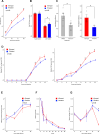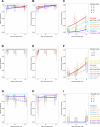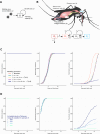This is a preprint.
Polygenic viral factors enable efficient mosquito-borne transmission of African Zika virus
- PMID: 39896559
- PMCID: PMC11785240
- DOI: 10.1101/2025.01.23.634482
Polygenic viral factors enable efficient mosquito-borne transmission of African Zika virus
Update in
-
Polygenic viral factors enable efficient mosquito-borne transmission of African Zika virus.Nat Commun. 2025 Oct 30;16(1):9594. doi: 10.1038/s41467-025-64627-0. Nat Commun. 2025. PMID: 41168162 Free PMC article.
Abstract
Zika virus (ZIKV) is a mosquito-borne flavivirus primarily transmitted among humans by Aedes aegypti. Over the past two decades, it has caused significant outbreaks associated with birth defects and neurological disorders. Phylogenetically, ZIKV consists of two main genotypes referred to as the African and Asian lineages, each exhibiting distinct biological properties. African lineage strains are transmitted more efficiently by mosquitoes, but pinpointing the genetic basis of this difference has remained challenging. Here, we address this question by comparing recent African and Asian strains using chimeric viruses, in which segments of the parental genomes are swapped. Our results show that the structural genes from the African strain enhance viral internalization, while the non-structural genes improve genome replication and infectious particle production in mosquito cells. In vivo mosquito transmission is most significantly influenced by the structural genes, although no single viral gene alone determines this effect. Additionally, we develop a stochastic model of in vivo viral dynamics in mosquitoes that mirrors the observed patterns, suggesting that the primary difference between the African and Asian strains lies in their ability to traverse the mosquito salivary glands. Overall, our findings suggest that the polygenic nature of ZIKV transmissibility has prevented Asian lineage strains from achieving the same epidemic potential as African lineage strains, underscoring the importance of lineage-specific adaptive landscapes in shaping ZIKV evolution and emergence.
Keywords: Aedes aegypti; African lineage; Asian lineage; Zika virus; chimeric virus; mosquito-borne transmission; stochastic modeling; viral dynamics; virus evolution.
Conflict of interest statement
Declaration of interests The authors declare no competing interests.
Figures




References
-
- Boyer S., Calvez E., Chouin-Carneiro T., Diallo D., Failloux A. B., An overview of mosquito vectors of Zika virus. Microbes Infect 20, 646–660 (2018). - PubMed
Publication types
Grants and funding
LinkOut - more resources
Full Text Sources
Miscellaneous
